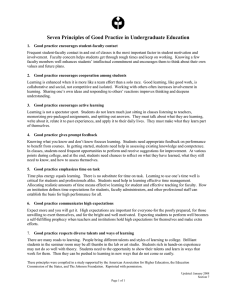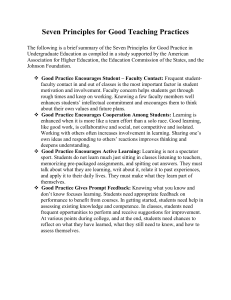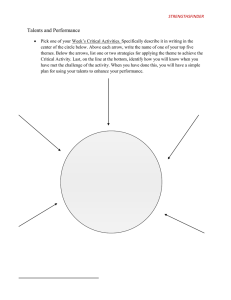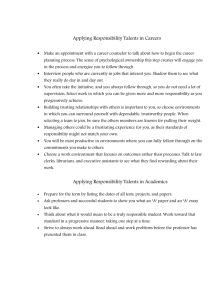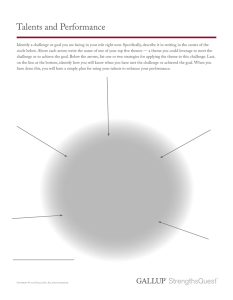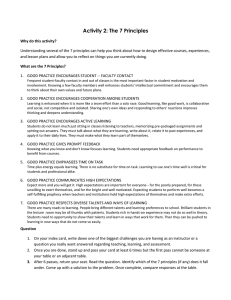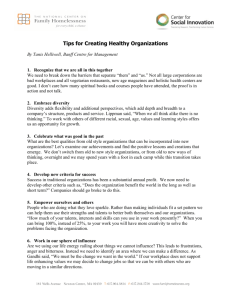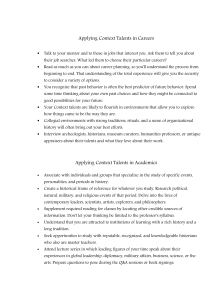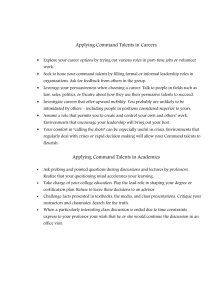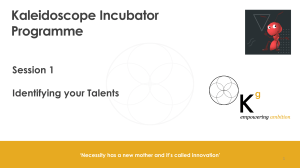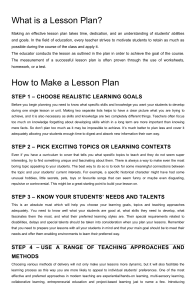Improving Student Learning, and Assessment
advertisement
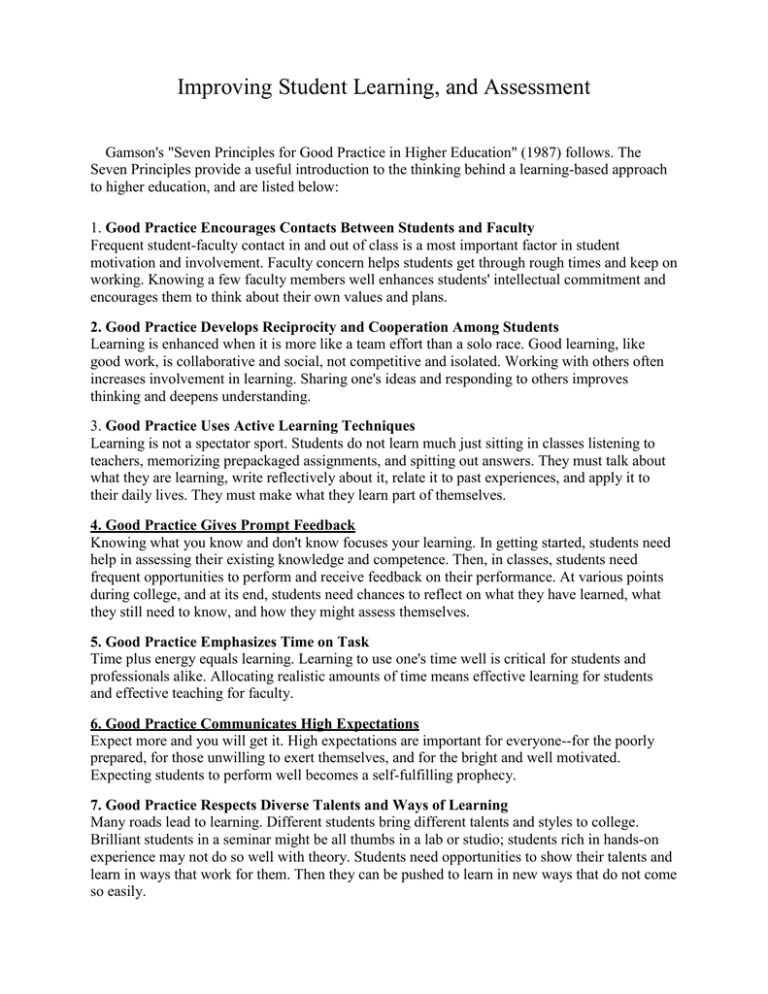
Improving Student Learning, and Assessment Gamson's "Seven Principles for Good Practice in Higher Education" (1987) follows. The Seven Principles provide a useful introduction to the thinking behind a learning-based approach to higher education, and are listed below: 1. Good Practice Encourages Contacts Between Students and Faculty Frequent student-faculty contact in and out of class is a most important factor in student motivation and involvement. Faculty concern helps students get through rough times and keep on working. Knowing a few faculty members well enhances students' intellectual commitment and encourages them to think about their own values and plans. 2. Good Practice Develops Reciprocity and Cooperation Among Students Learning is enhanced when it is more like a team effort than a solo race. Good learning, like good work, is collaborative and social, not competitive and isolated. Working with others often increases involvement in learning. Sharing one's ideas and responding to others improves thinking and deepens understanding. 3. Good Practice Uses Active Learning Techniques Learning is not a spectator sport. Students do not learn much just sitting in classes listening to teachers, memorizing prepackaged assignments, and spitting out answers. They must talk about what they are learning, write reflectively about it, relate it to past experiences, and apply it to their daily lives. They must make what they learn part of themselves. 4. Good Practice Gives Prompt Feedback Knowing what you know and don't know focuses your learning. In getting started, students need help in assessing their existing knowledge and competence. Then, in classes, students need frequent opportunities to perform and receive feedback on their performance. At various points during college, and at its end, students need chances to reflect on what they have learned, what they still need to know, and how they might assess themselves. 5. Good Practice Emphasizes Time on Task Time plus energy equals learning. Learning to use one's time well is critical for students and professionals alike. Allocating realistic amounts of time means effective learning for students and effective teaching for faculty. 6. Good Practice Communicates High Expectations Expect more and you will get it. High expectations are important for everyone--for the poorly prepared, for those unwilling to exert themselves, and for the bright and well motivated. Expecting students to perform well becomes a self-fulfilling prophecy. 7. Good Practice Respects Diverse Talents and Ways of Learning Many roads lead to learning. Different students bring different talents and styles to college. Brilliant students in a seminar might be all thumbs in a lab or studio; students rich in hands-on experience may not do so well with theory. Students need opportunities to show their talents and learn in ways that work for them. Then they can be pushed to learn in new ways that do not come so easily. Assessment is not just the measurement of learning; it is in itself an integral part of learning. Assessment is the first step in a continual learning cycle that includes measurement, feedback, reflection, and change. The purpose of assessment is not merely to gather information, but to foster improvement. Frequent assessment of students helps them to refine concepts and deepen their understanding; it also conveys high expectations, which further stimulate learning. "Students overwhelmingly reported that the single most important ingredient for making a course effective is getting rapid response" (Wiggins, 1997).
